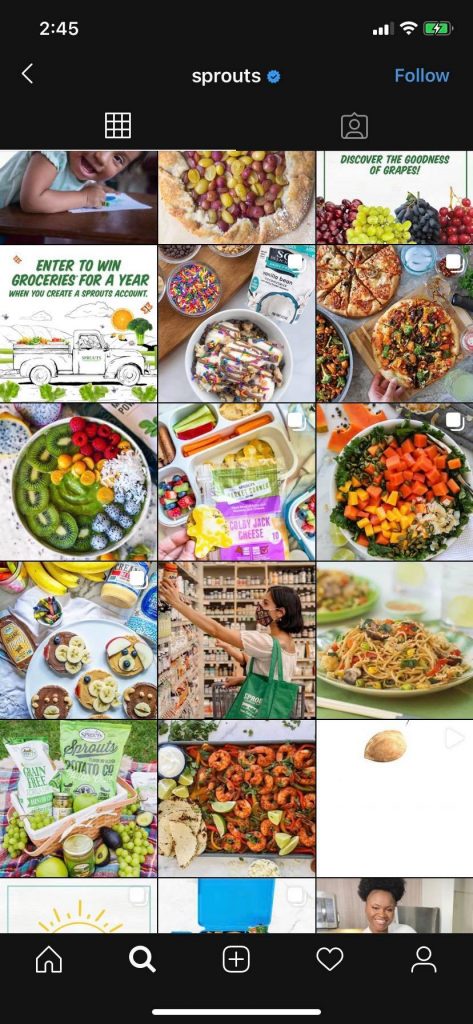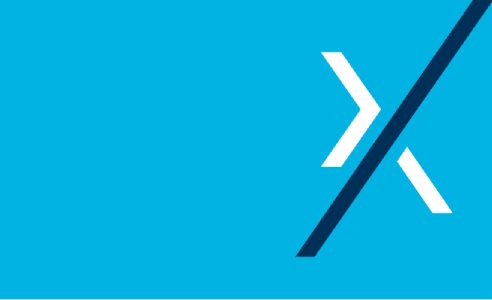
Guide to a Better Marketing Strategy, Part 5 — Social Media
Guide to a Better Marketing Strategy, Part 5 — Social Media
Welcome to Chapter 5 of our ongoing “Guide to a Better Marketing Strategy” – the set of articles to help you improve your Internet marketing strategy across all digital marketing channels!
So far, we covered Measuring Online Marketing Success, Organic Search (SEO), Pay-Per-Click Advertising (PPC), and Email Marketing.
In this chapter, we’re going to talk a bit about Social Media as an effective marketing tool for your digital marketing campaigns.
Social media for marketing includes things like social media marketing, social media advertising, which platforms to consider, tools to support posting, and more.
Table of Contents:
Most people know what social media is, and, fortunately, there are a lot of common sense ways to incorporate a good socials strategy into your current digital marketing plan. You can do things like crosspost new content to your Instagram, or showcase new staff members on Facebook as a way of socially interacting while also highlighting your company’s activities.
Social Media – What Kind of Animal Is It?
In this guide, we’re going to give you a few simple breakdowns of individual Social Media elements and how you can use them to more effectively market your brand and business.
Role of Social Media in Business

If you’re on the internet, you know what Social Media is.
A broad recap for anyone just now waking up from a 20-year coma: social media is pretty much any online platform that allows for social interaction.
Facebook, Instagram, LinkedIn, Twitter, and so on. It even extends a bit to forums, aggregators, and other places where a lot of people gather for a primarily social purpose, like Reddit or various hobby forums.
In terms of marketing, social media is a useful platform for branding, advertising, and community outreach. You produce content in the relevant style of your chosen social media platform, and it serves as an ongoing marketing tool by generating attention and interaction with your business.
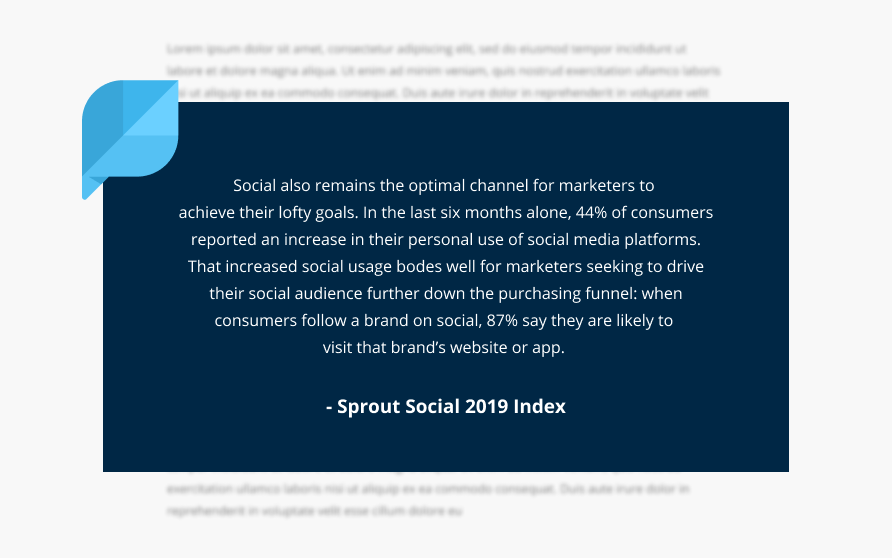
Social also remains the optimal channel for marketers to achieve their lofty goals. In the last six months alone, 44% of consumers reported an increase in their personal use of social media platforms. That increased social usage bodes well for marketers seeking to drive their social audience further down the purchasing funnel: when consumers follow a brand on social, 87% say they are likely to visit that brand’s website or app. – Sprout Social 2019 Index
There are two main reasons a business wants to focus on social media as part of a digital marketing strategy:
- You want to be where your audience is.
We’ve talked in previous articles about how massive social media is when it comes to the sheer volume of active users. According to this research, 7 in 10 people use social media on a regular basis, and this only accounts for Americans.
In order to develop a relationship with those users, broadcast your brand, and stay relevant or connected, your business should have a social media presence.
- You want to develop your brand image.
Social media is essentially a ready-made platform for developing your brand voice and image.
It’s an easy place to showcase new aesthetics, build up your brand personality, and interact with your audience on a more personal level than pure business interactions.
How Marketing Companies Use Social Media

A company’s social accounts are a great way to boost a company’s signal as well.
Whether you’re starting a new marketing campaign, churning out a lot of great content, or looking for opportunities to highlight new initiatives, deals, and partnerships, social media is perfect for adding another avenue of delivery for all of these efforts.
For example, let’s say you just wrote an amazing new blog. Your readers seem to love the piece, but you don’t have a massive organic audience, so there aren’t many eyes on the piece.
Posting it to your social media platform of choice can bring in an even wider audience, increasing exposure across the board and showing people that you’re an expert in your field.
It’s also a good way to get some additional traffic to your main website.
Covering Basic Social Media Lingo
Before we get into some of the more technical information, let’s cover some of the basic elements and terminology for social media:
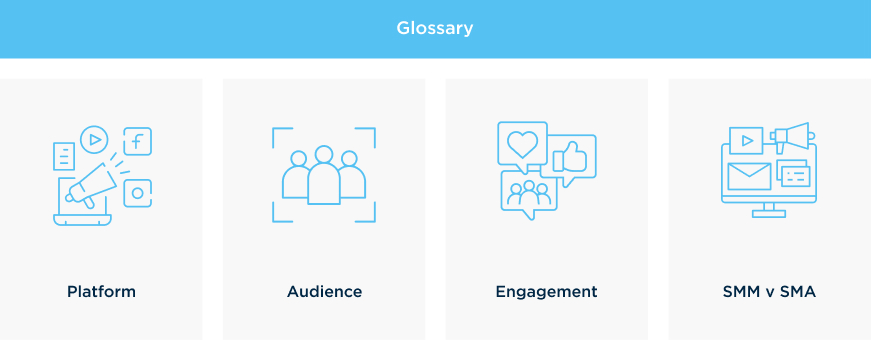
Platform
A social media platform is basically whatever website or app you’re using.
Again, that’s stuff like Facebook, Instagram, Twitter, etc.
You’ll find that each platform has a unique user environment, from demographic to styles of engagement. More often than not, a key part of social media strategy is choosing the right platform for your business and content style.
In the examples above, we can see how different companies interact with their audience.
Where Wendy’s is playful and engages in corporate humor that’s well suited to Twitter, Sprouts takes a more visual approach by leveraging the image-heavy focus of Instagram and posting colorful, appealing pictures of their products.
Audience
Audience is basically the user base of any given platform, though it may also be a more general population you’ve selected as a primary target for your marketing efforts.
When it comes to social media, choosing your target audience is often the first step.

Outlining your brand or product’s ideal demographics will help narrow down which platforms, content, and engagement styles work best.
Another example:
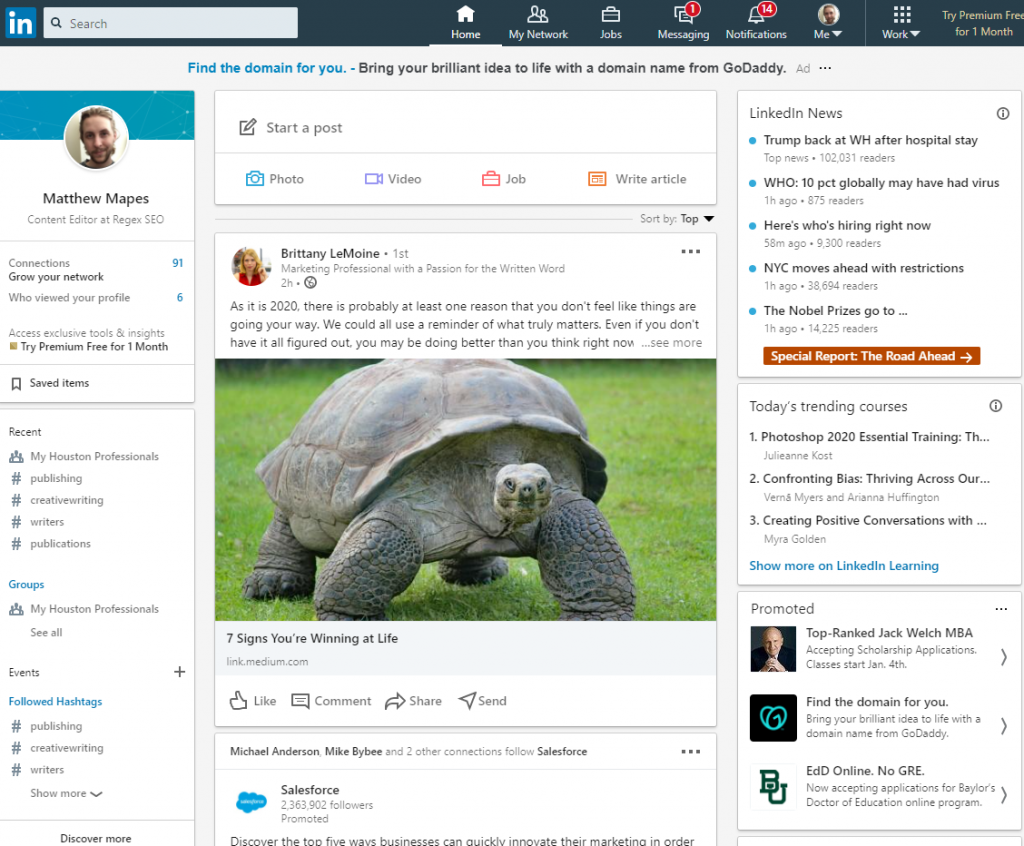
Engagement
Finally, we have engagement, which as a marketing term is a bit of a two way street.
On one hand, it’s the type of content and interaction you have on social media. Things like contests, giveaways, news updates, replying regularly to comments and interaction from your audience.
On the other hand, it’s how much your audience is actively interacting with your posts. How often are people liking your posts, sharing your updates, leaving comments and tagging others?
Engagement is important because it’s one of the main metrics for measuring the success of a social media campaign. We’ll cover more on that later.
Of course, the end goal is to drive more awareness and business to your main website, resulting in conversions and new or returning business.
Social Media Management vs Social Media Advertising
While the terminology is all pretty similar, there are some major differences.
Social Media Advertising is a fairly literal process. It’s buying and managing the literal advertisements that pop up on social media.

Social Media Management is the actual process of having an internal or external team manage and operate your social media accounts.
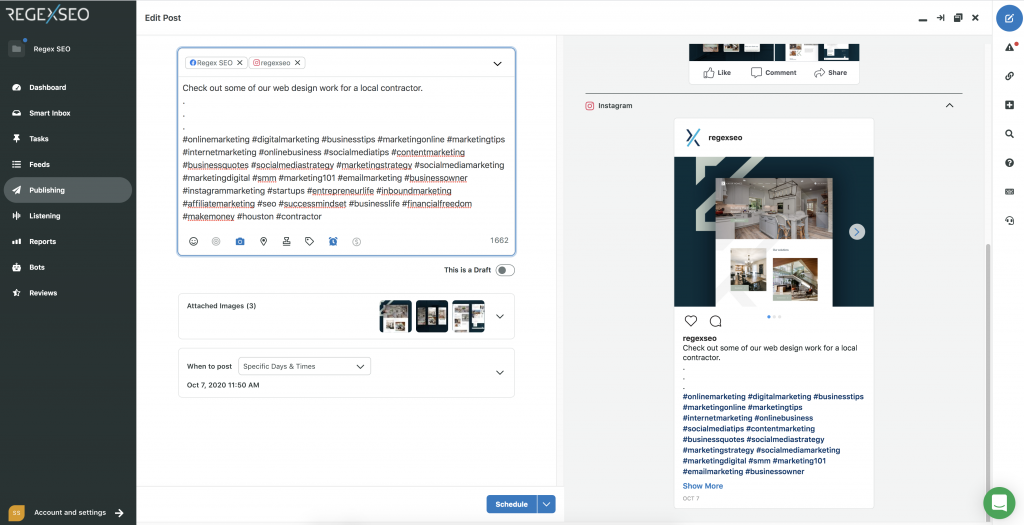
This means they’ll schedule posts, draft brand appropriate content, and basically run your social media according to whatever campaign guidelines line up with your overall marketing strategy.
There’s actually tons of marketing that goes into both Social Media Management and Social Media Advertising, so be on the lookout for a future blog where we dig into the details!
Tracking the Value of Social Media Efforts
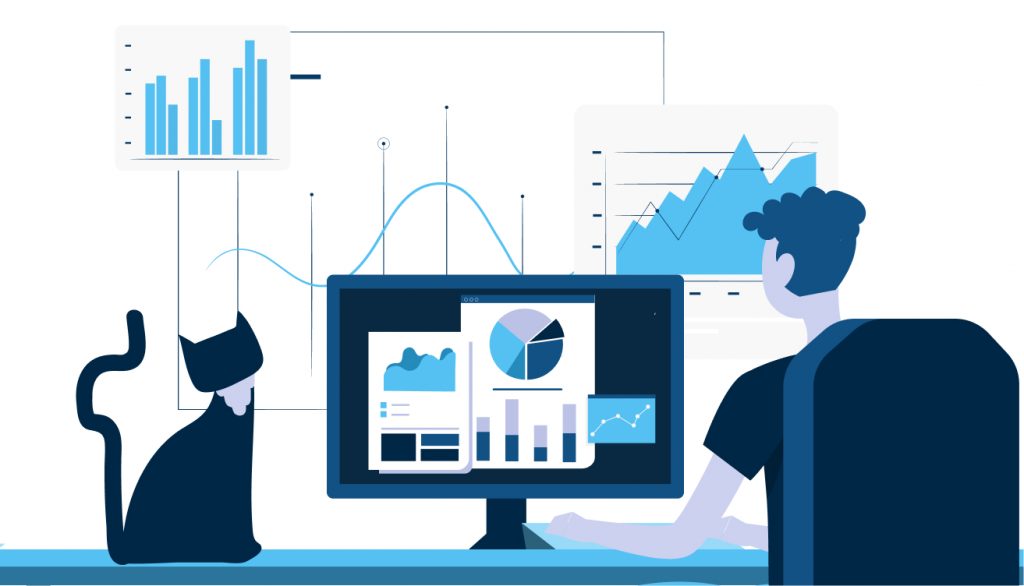
Social media metrics are often confused with each other or oversimplified.
For example, follower count is often looked at as one of the most important metrics, but realistically speaking it’s significantly less important than actual engagement or impressions.
Understanding the metrics for social media is key to developing an effective strategy. After all, if you don’t know what to measure, how do you know when your plan is working?
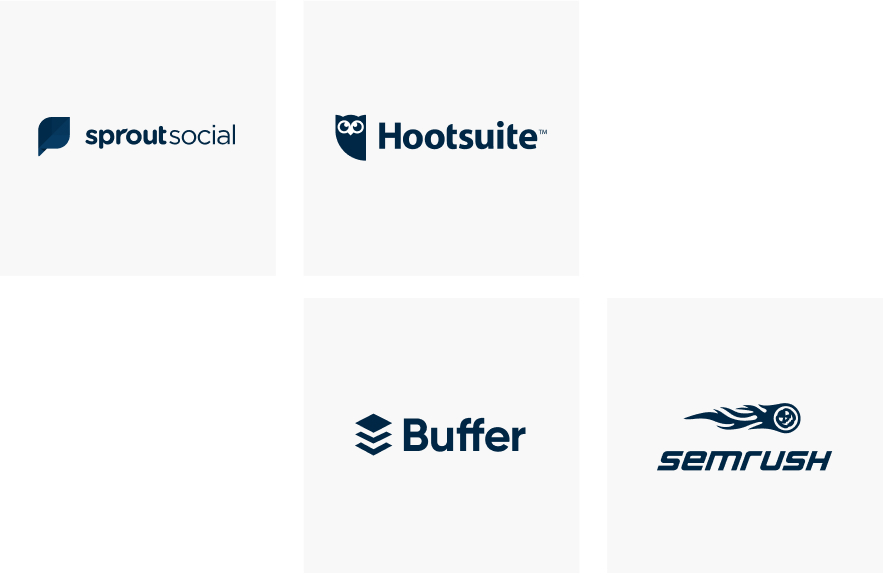
Taking a look at Sprout, one of the main social media management tools we use at Regex SEO, we can see a breakdown of the metrics you need to watch. Of course, the main three are engagement, awareness, and ROI.
- Engagement
Engagement is both the blanket term we used earlier, and a significant metric.
If we’re converting engagement into something you can count, then we want to look at likes, clicks, and basically any other instance where a user did more than simply look at your post.
Engagement matters because it’s the most evidence-driven, trackable metric for social media.
Like we said, follower count is important, but a huge audience that never engages with your posts is worth significantly less than a small-to-medium audience that likes and shares every single piece of content.
- Awareness
Most people are more familiar with the term ‘impressions’, and sometimes ‘reach’. These are both basic components of awareness, another major metric in social media.
Reach is essentially the number of people that actually see your post. Whether they follow you or see it shared by a friend, it’s just the number of eyeballs on the content.
Impressions are the number of times your content is actually viewed, even if it’s by the same person.
Alex York, in a blog for Sprout, gives a pretty great breakdown of impressions and reach:
“Similar to our first example, let’s say you have 100 followers on Twitter and you published one Tweet. If every one of your followers sees that Tweet, you have a potential reach of 100 users–along with 100 impressions.
To continue, say tomorrow you publish two Tweets to the same 100 followers. Your reach is still potentially 100 users because your follower count didn’t change. However, now you have 200 impressions. Why? Because every single one of your 100 followers saw both Tweets you published.”
Balancing reach and impressions is critical because you almost always want your impressions to exceed your reach. Ideally, you’ll aim for at least a 1:1 ratio, but getting more impressions beyond your reach is a good sign of growth, and can potentially improve your reach.
More Reach + More Impressions = More Awareness. And this is 100% one of those times where more is better.
Improved Awareness tends to improve engagements and ROI because you’re increasing your total audience size, which in turn increases the likelihood of people in that audience engaging with your socials.
- ROI
ROI is the most basic, and arguably most important, metric for pretty much any business.
We’ve covered ROI in earlier parts of our guide, but it’s essentially the actual conversion rate that comes directly from investing in social media.
While things like Engagement and Awareness measure how successful your social media is at being seen, ROI measures whether or not you’re actually profiting from all the work that goes into it.
Tracking ROI can be a little complicated.
To directly track ROI, you can easily use something like Google Analytics or Tracking Pixel to track traffic, interactions, and all kinds of other on-site activity.
Using these tools to track your ROI is integral to building a more effective social media marketing campaign. However, social media can also impact things like brand awareness and recognition, which is related to ROI.
But brand awareness, which can still impact ROI, is a bit harder to track from any given source. That’s why you’ll want to rely on analytics to get a clear picture of how much interaction your socials get over time.
How To Measure
Fortunately, there’s a whole list of tools that can be used to arrange and measure the metrics on your social posts.
We use Sprout and SEMrush to keep track of engagement and schedule our posts, for example.
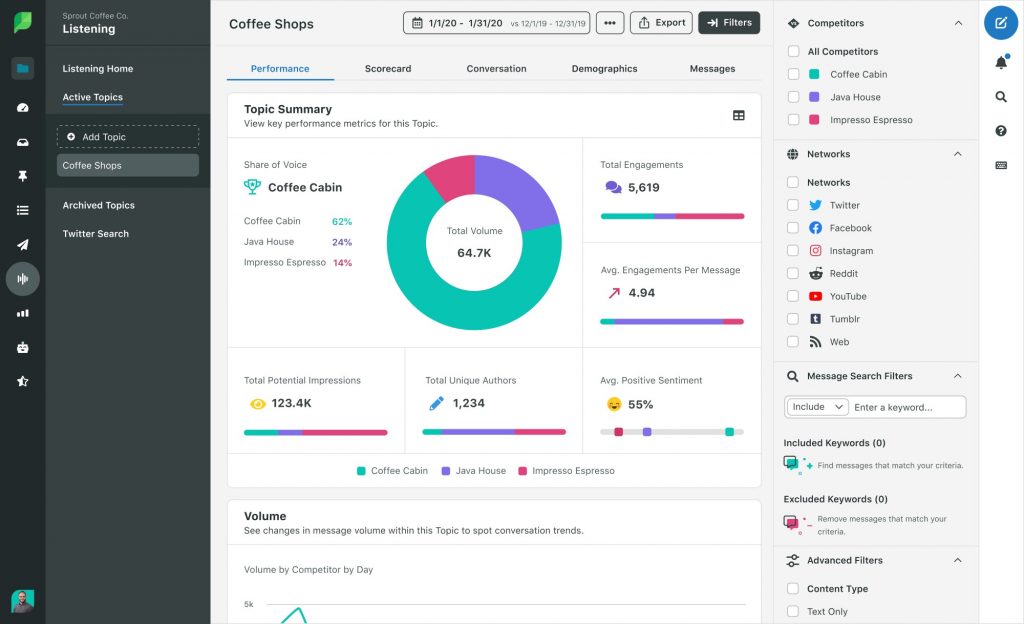
Here you can see one of the Sprout dashboards we use to track and operate a client’s social media accounts.
Not only is it useful to have this data compacted into a single view, but it also allows us to work across several different platforms for the client in question without micromanaging each individual platform.
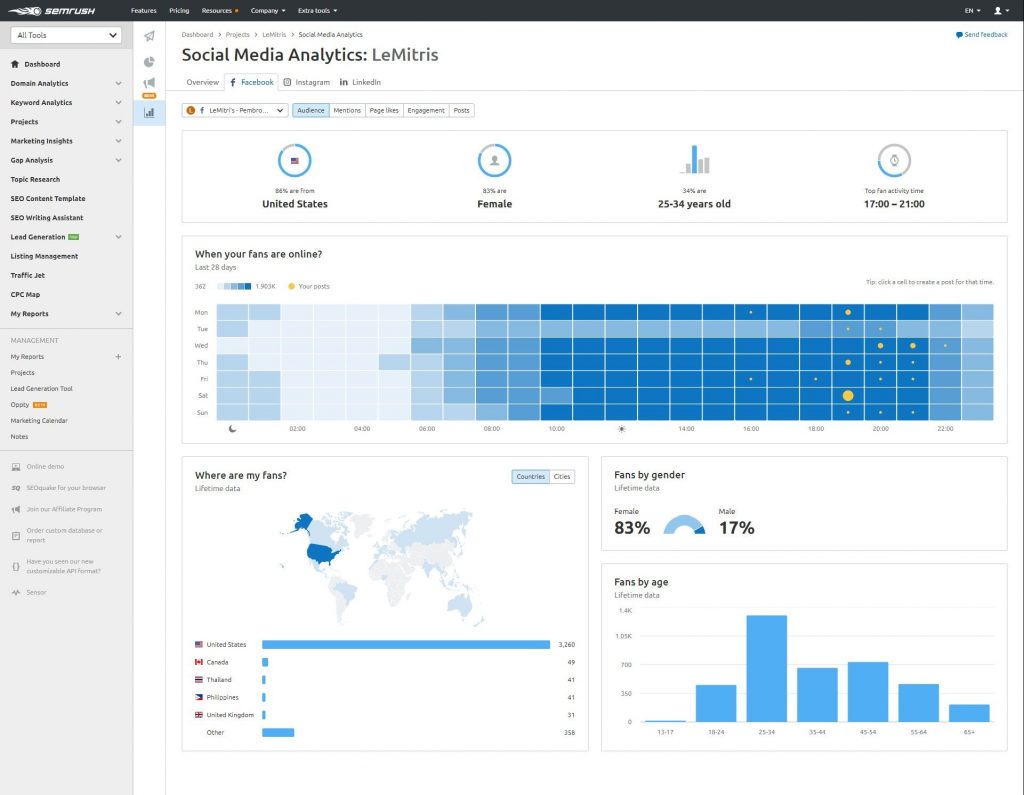
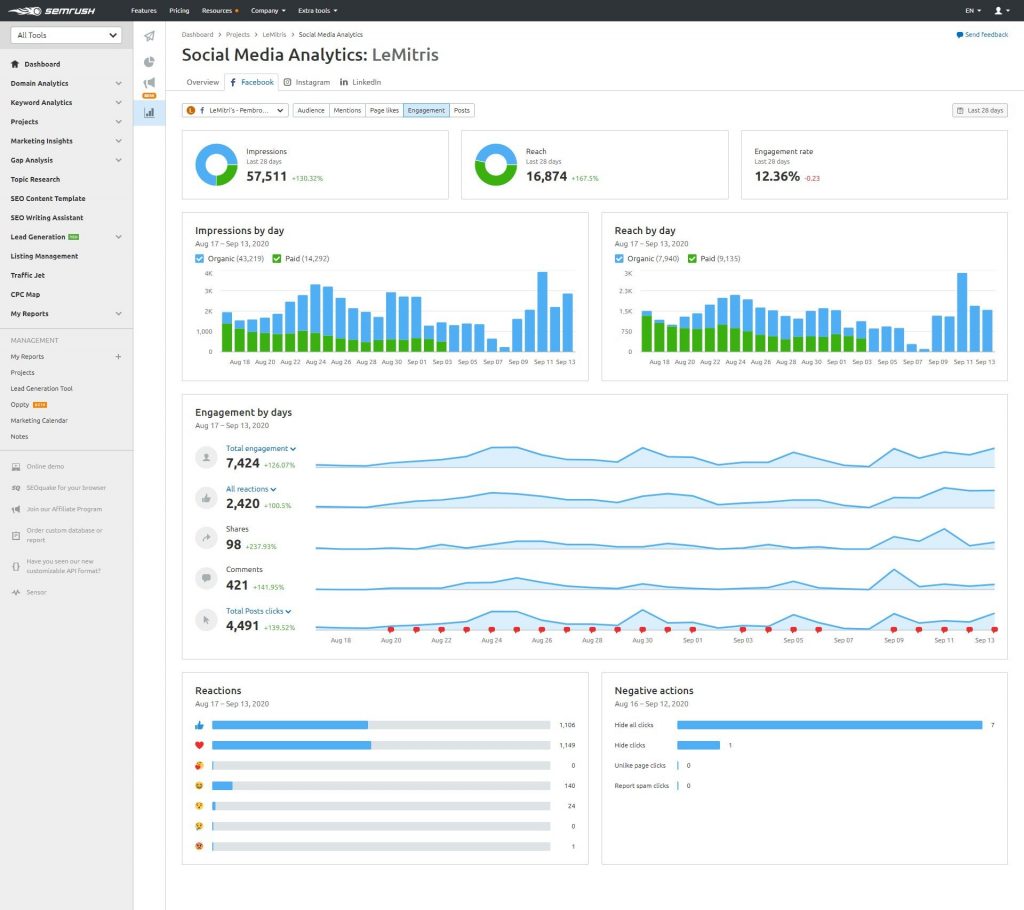
SEMrush’s Facebook engagement overview dashboard
And here we can see some of the data breakdown tools from SEMrush.
In the first image, we get a look at how SEMrush can provide visualizations for social media performance metrics. We can see things like audience breakdown by demographic and when your audience is most active.
In the second, we can see a set of statistics for engagement. Having access to accurate stats for both your audience composition and how they engage with your socials is a huge help when you’re planning your next move.
Don’t Forget the Built-In Dashboards!
Many social media platforms have built-in dashboards available for professional accounts or in the advanced settings.
While the options aren’t quite as expansive or customizable as something like SEMrush, they still offer a pretty useful look into how your audience interacts with your social accounts.

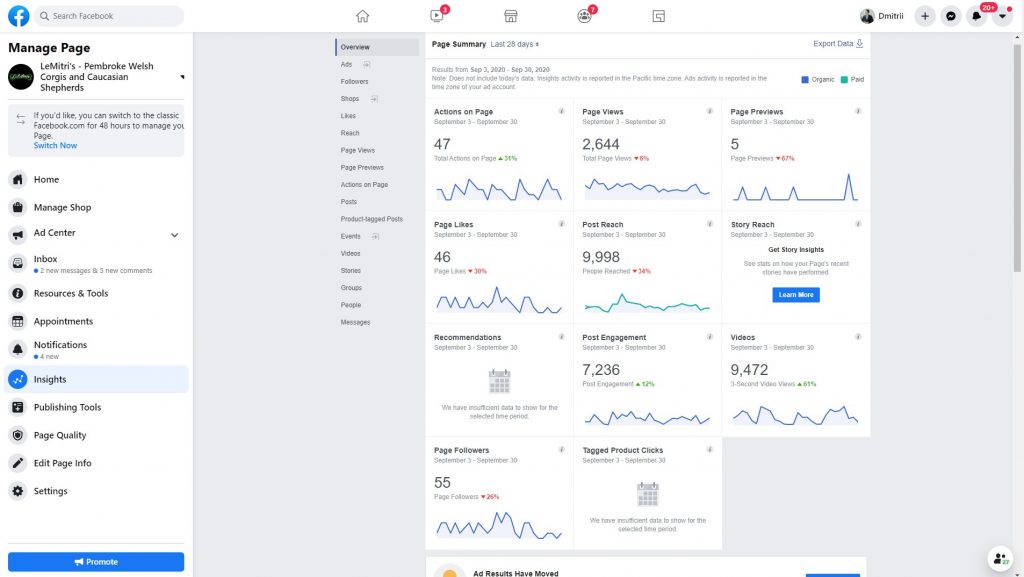
For Instagram and Facebook, you can check out these built-in dashboards, called Insights. As you can see, even though it’s a simple preexisting component of the platforms, it still offers a pretty wide range of information.
If you’re not quite sold on the value of increasingly customizable external platforms like SEMrush or Sprout, these onboard dashboards could be a great way to get acquainted with tracking your own metrics and analytics.
Why Do I Need These Tools?
These tools provide a huge range of functionality and vital information that increases both how efficiently you can leverage your social media strategies, and how much you can learn about your audience and their behavior.
We’d highly recommend using similar tools as part of any social media campaign.
Struggling to manage several different platforms manually or working without insight into the stats and actual metrics of your campaign is a waste of time.
If you’re wondering which tools to use, we’d obviously recommend Sprout and SEMrush if you’re managing a range of social media platforms and accounts. Don’t forget that there are tools for each platform as well, such as specialized options for Instagram, and other platforms that are extremely useful.
Dos and Don’ts of Social Media Marketing

Now that we’ve covered all the basic terms, tools, and ideas behind social media campaigns, let’s take a look at technique.
The simplest way to capitalize on social media is by curating authentic engagement and naturally growing your audience. Unfortunately, there are more than a few pitfalls that people of all skill levels make.
Let’s go over a few of the major Dos and Don’ts when it comes to operating your social media campaign:
Do grow your audience organically, Don’t buy followers
This is an incredibly common issue when it comes to social media, particularly on platforms like Instagram where people focus on follower count and influencer status.
Buying followers basically means you’ve paid a bunch of people to follow your account, which does technically boost your follower count in a very short period of time. The downside is that engagement is absolutely necessary for your account to actually get any traction.
Having a million followers means nothing if only five of them actually like your post.
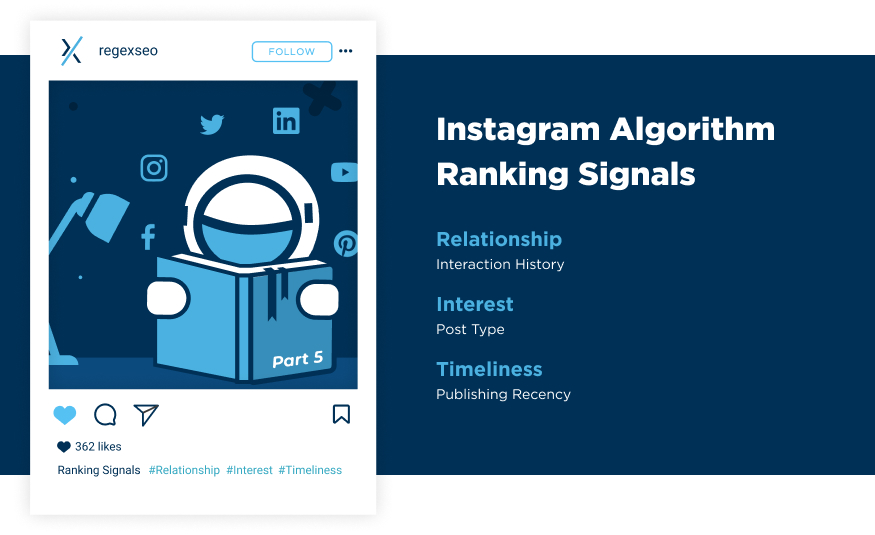
While Instagram is not quite as forthcoming about how their ranking system works, we do know that they’ve issued statements that suggest relationship, interest, and timeliness are primary factors.
So basically you want people that actually follow you, actively engage with your posts, and you should be posting often. This is a pretty consistent truth across all platforms, even without considering the algorithms.
Conveniently enough, this is the same strategy you want to adopt if you’re trying to grow your audience through organic efforts.
Do post often, Don’t post without a purpose
This might seem counterintuitive, but it’s important that you strike a balance between posting regularly and only posting relevant or useful content.
In Facebook’s Best Practices guidelines, we can see that there’s a heavy emphasis placed on consistency:
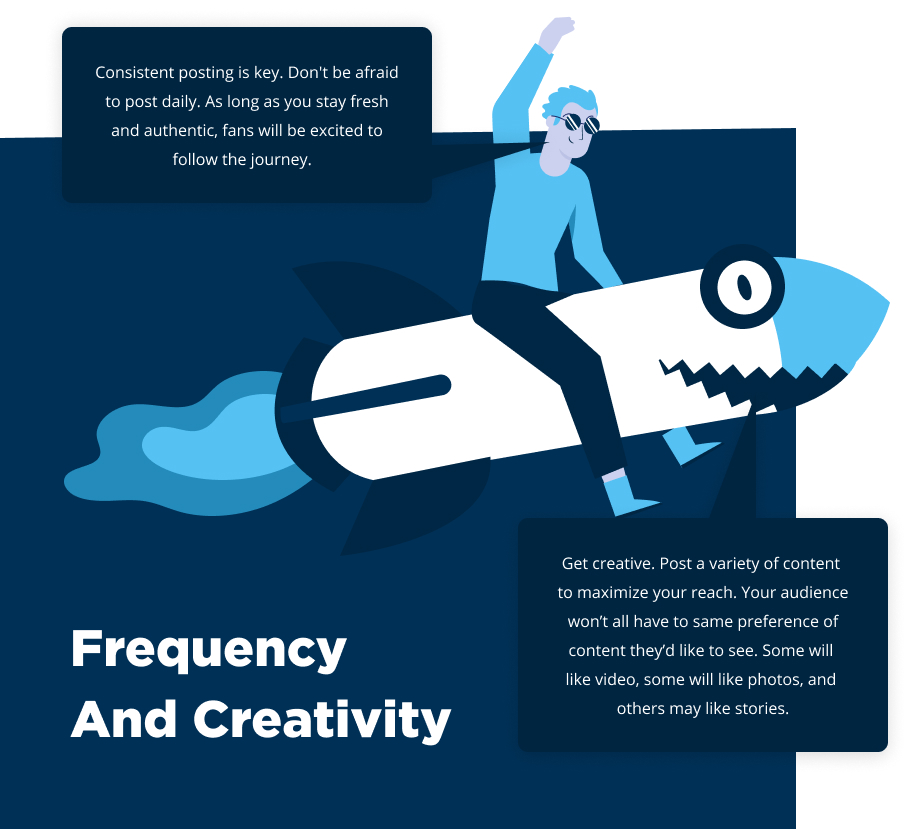
Basically, you should post as often as you can, so long as you’re keeping the content interesting.
More importantly, most social platforms send stronger signals for consistent posts. That means posting every other day sends a stronger signal than posting three days in a row, then disappearing for a week.
A good rule of thumb is to post as often as you can without running out of stuff to say.
Do select your best platform, Don’t spread yourself too thin
Spend some time thinking about your brand and the kind of content that you want to post on social media.
For many brands, posting on all of the major platforms is fine. So long as you have the resources to produce good content and post regularly, expanding your reach isn’t going to hurt.
However, smaller businesses with less resources or businesses with hyper focused or niche products may want to target a more specific demographic. This is why it’s important to understand your primary audience, and the audience demographics for each social platform.
Let’s consider Facebook and Instagram, with their demographics pictured below:
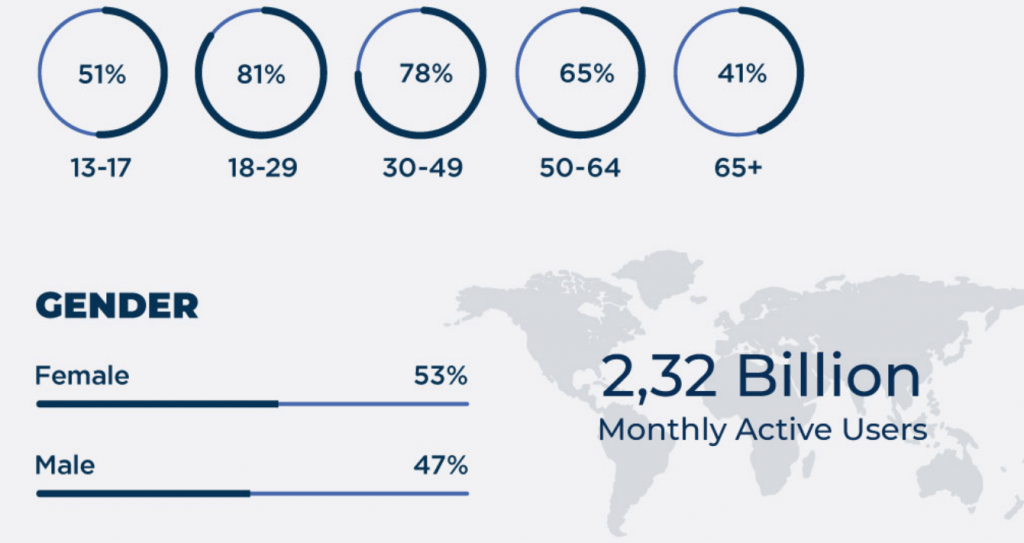
Facebook has an incredibly large user base. It trends towards older users, but it still has solid representation amongst a fairly wide demographic.
That means it’s a pretty universally appealing platform. It also features a wide range of post mediums, from text to video.
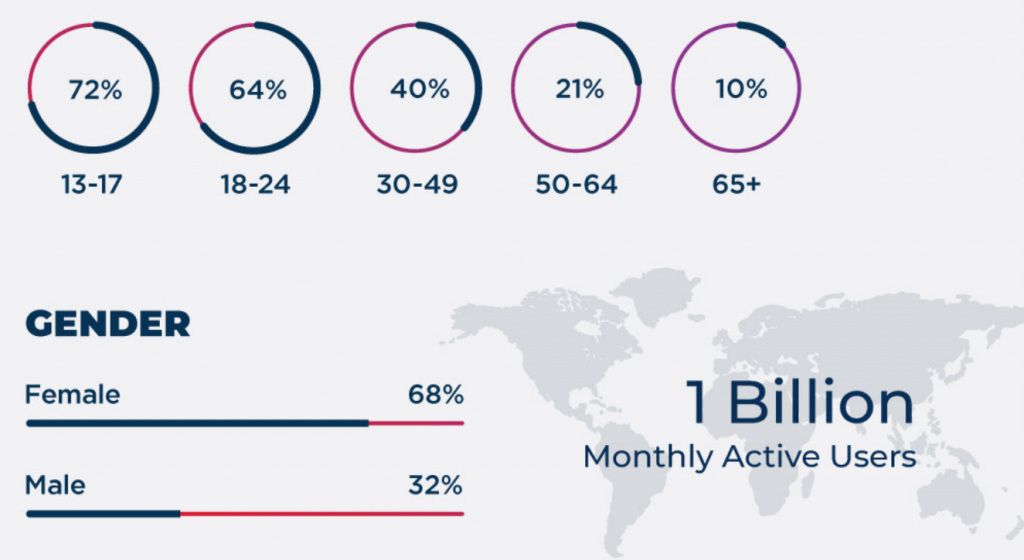
Instagram’s demographic trends significantly younger, and it also focuses on an image based, interactive content design.
This image focus and young demographic of the app may make it difficult for some brands that don’t have aesthetically pleasing posts or content to upload regularly.
The tradeoff is that Facebook has a consistent audience and tends to have a wider demographic in general, but Instagram has solid stats and tends to have a higher degree of engagement due to the visually appealing and easy to use nature of the app.
According to the same article, it turns out that the stats support this conclusion:
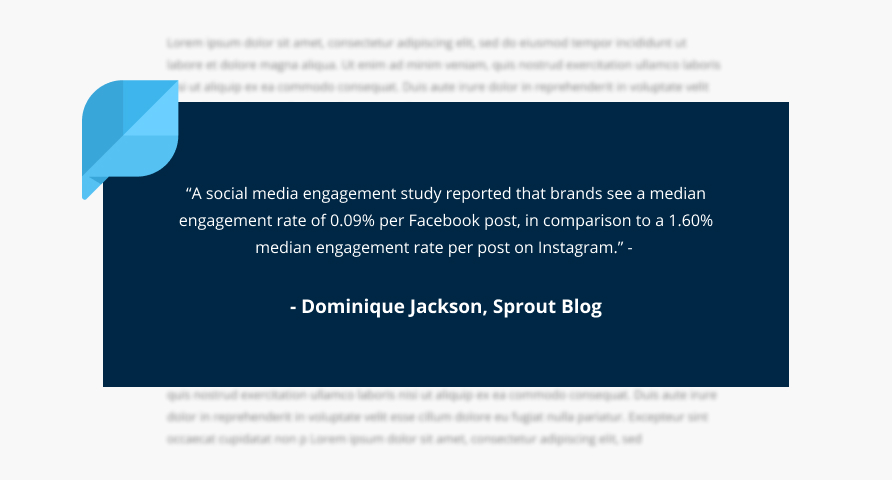
Optimizing Social Media

Once you’ve organized and launched a social media campaign, you need to focus on optimizing and maintaining all the elements that you’ve put together so far.
In the Dos and Don’ts section, we talked about a number of things you’ll want to avoid and a few things you’ll want to absolutely keep up. Consistent posting, organic growth, and constantly choosing the right platform for new initiatives and content are all key elements of optimization.
However, there are a few more subtle ways that you can really hone your campaign to maximize the effort you’ve put in so far.
Post the Good Stuff
With your social campaign structure in place, you’ll need to flesh it out with actual content.
We could write a whole separate guide just on what kind of content people post on social media, but the shortest answer is this:

Generally speaking, social media is great because of the whole ‘social’ part.
As we’ve mentioned, it’s a great place for companies to show off a bit more of their personality, which means you can engage in popular social media trends, speak about world events, and take a slightly less professional tone.
But just like you don’t want to go to a party and listen to someone drone on about their earnings report, remember that the social media audience isn’t going to engage with boring or repetitive content.
Be Flexible, But Don’t Compromise Quality
Designing a flexible social media strategy will offer you a bit of wiggle room when it comes to adapting to priority shifts and changes.
For example, if some big news comes out that impacts your industry, or if a world event like Covid-19 happens, you might want to break from your regularly scheduled programming of top 10 guides and office introductions to address the event.


For example, here we can see both Guinness and the CDC leveraging social media to broadcast their response to Covid-19.
It serves as an opportunity for a company like Guinness to show that they’re invested in the health and safety of their customers, while social media gives the CDC a wider platform to send out messages on public health and safety.
That said, you shouldn’t stop posting regularly or completely abandon your quality checks for content and social updates.
A captive social media audience will certainly engage with topical posts and news on current events, but they’re still a social media audience, which means all the same rules and expectations will still impact how engaged they are with your content.
Get Help When You Need It
Finally, if you can’t focus on a social media campaign, don’t be afraid to contract it out.
Social media is too valuable for companies to completely ignore, these days.
If you’re a smaller business, you can work with freelance social media managers that can at least help get your accounts set up, organized, and suitable for a stable audience. For mid and large-sized businesses, working with an actual digital marketing team or social media development team is a good idea.
It can be a full-time job managing just one or two social media accounts, and when you need to post on a regular schedule, draft new content, and interact with your audience? Well, it can be difficult to balance running your own company at the same time.
One Channel Out of Many
The last thing you should remember is that social media is still just one of many digital marketing channels. While social media could easily be seen as a separate microcosm of marketing elements, you can’t forget that it is also just a marketing tool similar to Email Marketing and SEO.
Just like every other channel, social media works best when it’s supported by the various other channels. Interlinking your blog with social media content, including news updates from your newsletter on your social feed, and generally blending elements from each channel gives you a wider reach.
If you want to learn more about how each channel works, or if you’re looking for help establishing and managing your own social media presence, check out our guides or contact us.

